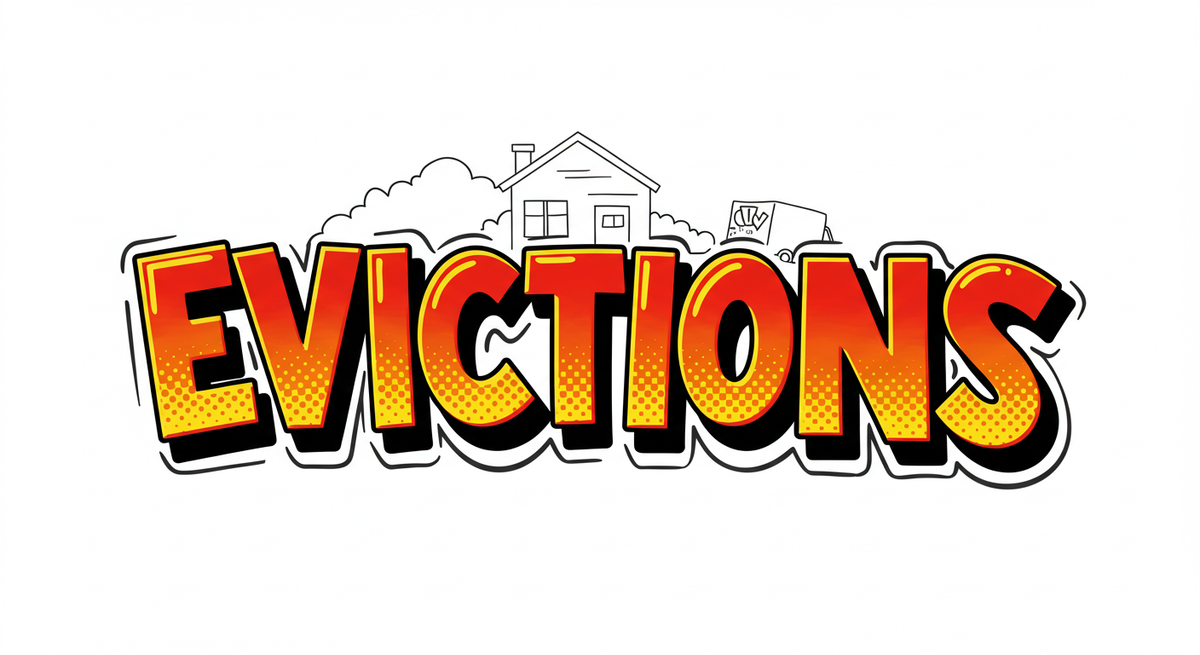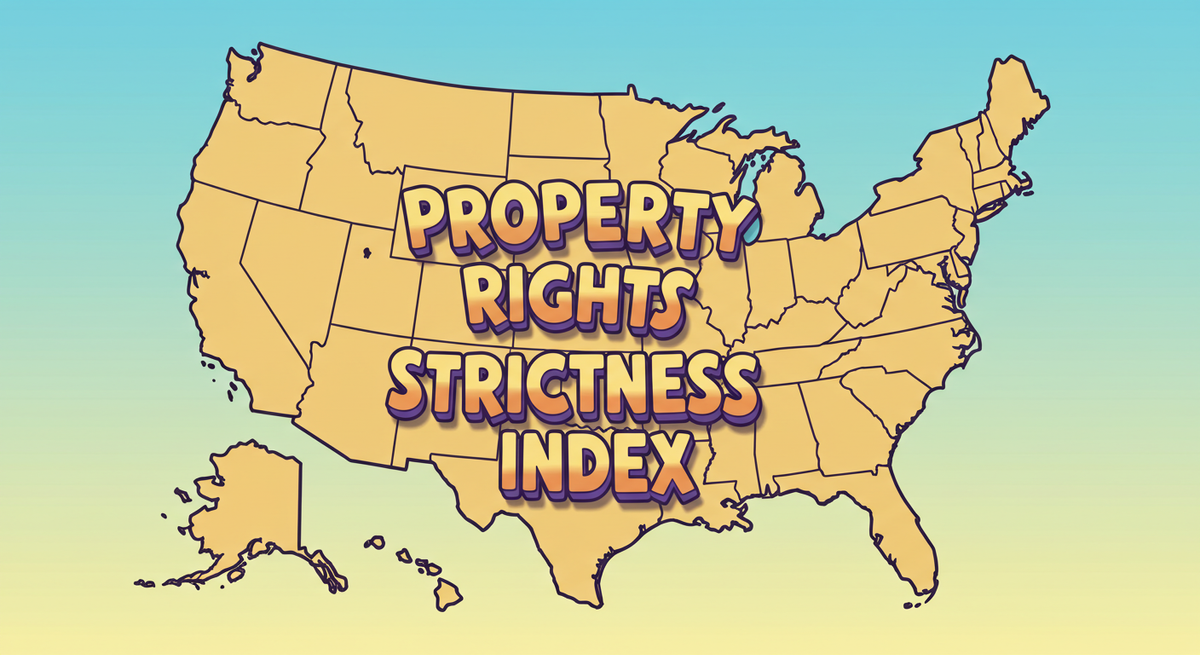Eviction in Property Management: A Complete Guide
Eviction is the legal mechanism landlords use to terminate a tenant's right to occupy their rental property and recover possession of the premises

Eviction Fact: 72.3% of forced tenant moves happen through informal evictions—meaning most landlords never see the inside of a courtroom when removing tenants. This staggering statistic from HUD researchers reveals a hidden crisis in property management, where lockouts, utility shutoffs, and intimidation tactics vastly outnumber legal evictions.
Eviction represents one of the most challenging aspects of property management. At its core, eviction is the formal legal process through which a landlord recovers possession of rental property from tenants who have violated lease terms or refuse to vacate when required. This process involves court proceedings, specific notice requirements, and strict compliance with local eviction laws.
In this article, you'll learn: What eviction means in practical terms, how the eviction process works step-by-step, critical legal requirements that vary by state, and proven eviction prevention strategies that save thousands while protecting tenant relationships.

What Is Eviction?
Eviction is the legal mechanism landlords use to terminate a tenant's right to occupy their rental property and recover possession of the premises. This formal procedure requires court involvement and follows strict legal guidelines that protect both landlord and tenant rights throughout the process.
Eviction is the legal mechanism landlords use to terminate a tenant's right to occupy their rental property and recover possession of the premises.
The eviction process encompasses several related legal concepts property managers must understand:
- Unlawful detainer: The specific type of lawsuit filed to obtain an eviction judgment
- Summary possession or forcible detainer: Alternative legal terms for eviction proceedings
- Formal eviction: Court-ordered removal executed by law enforcement officials
- Constructive eviction: When landlord actions make property uninhabitable, forcing tenants to leave
Understanding terminology matters because an eviction differs fundamentally from a lease non-renewal.
Non-renewal simply means choosing not to extend a lease at its natural expiration. Eviction involves removing tenants during an active lease term due to violations or non-payment.
This distinction determines which procedures landlords must follow and what tenant rights apply.
Why The Eviction Process is Similar in All 50 States
The modern eviction framework evolved from the Uniform Residential Landlord and Tenant Act (URLTA), adopted by many states since 1972.
Recent developments have added complexity—pandemic-era moratoriums, expanded tenant protections, and new federal assistance programs like the emergency rental assistance program have transformed traditional procedures.
Today's property managers navigate multiple regulatory layers while managing practical operational needs, and state variations create some challenges.
For example:
- Texas allows 3-day notices for most violations.
- California requires different notice periods based on tenancy duration and violation type.
- Federal housing programs mandate 30-day minimum notices.
So even though the process is the same, these types of differences make multi-state property management particularly complex.
For comprehensive state-specific guidance, explore our eviction laws by state directory.
The Hidden Crisis in Property Management
Most tenant removals never see the inside of a courtroom
- Lockouts
- Utility shutoffs
- Intimidation tactics
- Forced entry
- Harassment
- Court proceedings
- Legal notices
- Judge rulings
- Sheriff execution
- Official documentation
How the Eviction Process Actually Works
The eviction process follows a predictable sequence, though specific requirements vary dramatically by jurisdiction. Understanding each step helps property managers avoid costly procedural errors that can invalidate entire proceedings.
Step 1: Identify Valid Grounds for Eviction
Landlords need legally recognized reasons to evict tenants. Non-payment of rent accounts for approximately 80% of evictions, but other valid grounds include:
- Material lease violations (unauthorized pets, guests, or alterations)
- Non-payment of rent
- Criminal activity on the premises
- Health and safety violations
- Property damage beyond normal wear
- Holdover tenancy after lease expiration
Document everything. Take photos, save communications, and maintain detailed records.
Step 2: Serve Proper Written Notice
The eviction notice represents your first formal legal step. Notice requirements vary based on violation type and jurisdiction:
- Pay or Quit: Typically 3-5 days for rent non-payment
- Cure or Quit: 7-30 days for correctable lease violations
- Unconditional Quit: Immediate vacancy for severe violations
Notice service methods matter. Personal delivery provides best legal protection. Alternative methods include:
- Delivery to adult household member
- Certified mail with return receipt
- Posting on door (only after attempting personal service)
Texas law requires specific language in eviction notices. California excludes weekends from certain notice calculations. Federal programs require additional disclosures.
Step 3: File the Eviction Lawsuit
If tenants don't comply with notices, landlords file eviction lawsuits—called unlawful detainer actions in many states. Filing requirements include:
- Original complaint with specific allegations
- Filing fees (typically $136-$400)
- Summons for tenant service
- Supporting documentation (lease, notices, payment records)
Courts require precise procedural compliance.
Step 4: Attend the Court Hearing
Eviction hearings move quickly—often lasting just 10-15 minutes. Landlords must prove:
- Valid landlord-tenant relationship exists
- Proper notice was served
- Tenant violated lease terms
- All procedures were followed correctly
Tenants can present defenses including improper notice, landlord retaliation, or uninhabitable conditions.
Step 5: Execute the Eviction Judgment
Winning in court doesn't mean immediate tenant removal. The process continues:
- Judge issues eviction judgment
- Tenant receives time to appeal or vacate (24 hours to 10 days)
- Landlord obtains writ of possession
- Sheriff schedules eviction (often 1-3 weeks later)
- Law enforcement removes non-compliant tenants
Critical point: Only law enforcement can physically remove tenants.
The Legal Eviction Process
Step-by-step timeline from notice to tenant removal
- Non-payment of rent (80% of cases)
- Material lease violations
- Criminal activity on premises
- Property damage beyond normal wear
- Document everything with photos and records
- Pay or Quit: 3-5 days for rent non-payment
- Cure or Quit: 7-30 days for correctable violations
- Unconditional Quit: Immediate for severe violations
- Personal delivery provides best legal protection
- One formatting error can restart entire process
- Original complaint with specific allegations
- Filing fees: $136-$400 typically
- Summons for tenant service
- Supporting documentation required
- Missing deadlines invalidates cases
- Prove valid landlord-tenant relationship
- Show proper notice was served
- Demonstrate lease violations occurred
- Confirm all procedures followed correctly
- Judges often favor tenants with incomplete documentation
- Judge issues eviction judgment
- Tenant gets time to appeal (24 hours to 10 days)
- Obtain writ of possession from court
- Sheriff schedules actual eviction
- Only law enforcement can physically remove tenants
Critical Reminder
Landlord self-help evictions are illegal everywhere. Only law enforcement can physically remove tenants after proper court proceedings. Attempting self-help evictions exposes property owners to significant legal liability.

Impact on Property Management Operations
Financial Consequences
Evictions create cascading financial impacts that extend far beyond simple rent loss. Recent Eviction Lab data shows post-pandemic filing variations reaching 126% of historical averages in some markets, highlighting the volatility property managers face.
Direct eviction costs typically include:
- Court filing fees: $136-$400
- Legal representation: $500-$2,500 for simple cases
- Lost rent: 2-3 months minimum during proceedings
- Unit turnover: $1,500-$5,000 for repairs and marketing
- Potential damages: Often exceeding security deposits
The hidden costs prove equally damaging. Properties with high eviction rates struggle attracting quality tenants. Online reviews highlighting frequent evictions deter responsible renters. Vacancy rates increase. Rental rates decrease. Property values suffer.
Consider opportunity costs too. Time spent managing evictions prevents focusing on property improvements, tenant retention, and revenue optimization. Each eviction typically requires 20-40 hours of management time—time better spent on growth activities.
The True Cost of Evictions
Direct expenses plus hidden costs that most landlords never calculate
🔍 Hidden Costs Most Landlords Miss
Operational Challenges
Eviction management creates unique operational difficulties:
Documentation Requirements: Courts demand extensive paperwork—notices, service proofs, payment records, communication logs. Missing documents mean lost cases.
Timeline Management: Different notices have different deadlines. Weekends count differently across jurisdictions. Missing one deadline restarts everything.
Communication Challenges: Emotions run high during evictions. Tenants facing displacement often react with anger, desperation, or avoidance. Property managers must balance firm legal positions with professional communication.
Staff Training Needs: Eviction procedures change frequently. Staff need regular updates on new laws, assistance programs, and court requirements. One untrained employee serving improper notice can invalidate months of work.
Real-World Success Example
Strategic Eviction Prevention Saves Texas Property Manager $45,000
Challenge: A 150-unit apartment complex in San Antonio faced unprecedented challenges when 18 tenants fell behind on rent following local factory closures. Total arrears exceeded $67,000, threatening property cash flow and investor relations.
Solution: Instead of pursuing mass evictions, the management team implemented a comprehensive eviction diversion program:
- Partnered with local emergency rental assistance programs
- Negotiated realistic payment plans based on tenant employment status
- Offered Cash for Keys agreements to three chronically delinquent tenants
- Connected tenants with job placement services
- Documented all interactions meticulously
Outcome: The property recovered $52,000 through assistance programs and payment plans. They avoided 15 potential eviction cases, saving approximately $45,000 in legal and turnover costs. Occupancy remained at 94% throughout the crisis. Positive tenant relations led to multiple lease renewals from previously at-risk residents.
Takeaway: Eviction prevention often yields superior financial outcomes compared to aggressive legal action. Understanding available resources and maintaining flexible approaches protects both revenue and reputation.
Legal Framework and Compliance Requirements
Eviction law operates through overlapping federal, state, and local regulations. Property managers must understand all applicable rules—ignorance provides no legal defense.
Federal Requirements for Evictions
Federal eviction regulations primarily address discrimination and subsidized housing:
Fair Housing Protections: The Fair Housing Act prohibits discriminatory evictions based on:
- Race, color, or national origin
- Religion
- Sex (including gender identity and sexual orientation)
- Disability status
- Familial status
Selective enforcement of lease terms against protected classes creates liability. Document all violations consistently. Apply policies uniformly.
Subsidized Housing Rules: Properties accepting federal assistance face additional requirements:
- 30-day minimum notice periods (increased from 14 days)
- Good-faith eviction prevention efforts
- Acceptance of rental assistance payments
- Reasonable accommodation procedures
Recent HUD guidance expanded tenant protections significantly. Properties must now demonstrate attempting alternatives before filing evictions.
State-Level Variations for Evictions
State laws provide the primary eviction framework. Key differences include:
Notice Requirements:
- Texas: 3 days for most violations
- California: 3 days for rent, 30-60 days for no-cause termination
- New York: 14 days for rent in most cases
- Massachusetts: 14 days for rent, 30 days for lease violations
Court Procedures:
- Some states use specialized housing courts
- Others handle evictions in general civil courts
- Timeline variations range from 2 weeks to several months
Tenant Protections:
- Just-cause eviction requirements in some cities
- Winter eviction moratoriums in cold climates
- Special protections for elderly or disabled tenants
Eviction Documentation Best Practices
Successful evictions require meticulous documentation:
Essential Records:
- Original signed lease agreements
- All notices with service proofs
- Payment history showing exact dates and amounts
- Written warnings for violations
- Photographs of property damage
- Communication logs with dates and summaries
Digital Management: Modern property management software automates documentation. Systems should:
- Timestamp all entries automatically
- Generate legally-compliant notices
- Track payment histories
- Maintain audit trails
- Integrate with court filing systems
Retention Requirements: Keep eviction-related documents for at least seven years. Some jurisdictions require longer retention. Digital storage reduces physical space needs while ensuring accessibility.
Best Practices for Eviction Management
1. Implement Proactive Eviction Prevention Systems
What it means: Create systematic approaches to identify and address problems before they escalate to eviction proceedings.
Why it matters: Prevention costs 80% less than completed evictions while preserving tenant relationships and property reputation.
How to execute: Develop early warning systems that flag late payments immediately.
- Contact tenants within 24 hours of missed payments—not to threaten, but to problem-solve.
- Offer payment plans proactively.
- Connect struggling tenants with assistance resources before situations deteriorate.
- Train staff in empathetic communication that maintains boundaries while exploring solutions.
2. Master Notice Requirements for Your Jurisdiction
What it means: Develop foolproof systems for serving legally-compliant notices every time.
Why it matters: Improper notice represents the most common reason for eviction dismissals, wasting months of time and thousands in costs.
How to execute: Create jurisdiction-specific notice templates reviewed by local attorneys.
- Build checklists covering required content, formatting, service methods, and timeline calculations.
- Use property management software that automatically calculates deadlines including weekend/holiday adjustments.
- Photograph all posted notices.
- Maintain service logs with witness signatures.
3. Build Strategic Assistance Program Relationships
What it means: Establish connections with rental assistance programs before crisis situations arise.
Why it matters: Quick access to assistance funds can convert potential evictions into paid accounts while avoiding legal costs.
How to execute: Research local, state, and federal assistance programs quarterly—they change frequently.
- Create direct relationships with program administrators.
- Understand application requirements and timelines.
- Develop tenant information packets explaining available resources.
- Train staff to guide tenants through application processes.
- Track success rates to refine approaches.
4. Document with Legal Precision
What it means: Maintain court-ready documentation for every tenant interaction and property issue.
Why it matters: Eviction courts require extensive evidence. Incomplete documentation leads to case dismissals and restarts.
How to execute: Implement digital systems that timestamp everything automatically.
- Photograph all violations immediately.
- Save all communications including texts and emails.
- Create incident reports for verbal conversations within 24 hours.
- Use consistent formats that courts recognize.
- Regular audits ensure nothing falls through cracks.
5. Prioritize Professional Communication
What it means: Maintain respectful, clear communication even during contentious eviction proceedings.
Why it matters: Professional communication reduces escalation, encourages cooperation, and protects against retaliation claims.
How to execute: Develop scripts for common situations that balance firmness with respect.
- Train staff in de-escalation techniques.
- Document all interactions immediately.
- Avoid emotional responses to tenant provocations.
- Focus on facts and lease terms rather than personal issues.
- Consider hiring professional process servers for hostile situations.
Common Challenges and Solutions
Challenge: Tenants Claiming Hardship Without Documentation
Property managers frequently encounter tenants who claim financial hardship but provide no supporting documentation. This creates difficult decisions between compassion and business needs.
Solution: Establish clear hardship policies requiring specific documentation:
- Job loss: Termination letters or unemployment benefits statements
- Medical issues: Doctor's notes indicating work limitations
- Family emergencies: Death certificates or hospital records
Offer resources to help tenants obtain documentation. Partner with social services that can verify circumstances. Set reasonable deadlines. Document your efforts to accommodate while maintaining standards.
Challenge: Serial Lease Violators Who Pay Rent
Some tenants pay rent consistently but repeatedly violate other lease terms—unauthorized guests, noise complaints, or pet violations. These situations strain neighbor relations while generating no rental income loss.
Solution: Implement progressive violation policies:
- First violation: Written warning with specific correction requirements
- Second violation: Formal cure-or-quit notice with shorter compliance period
- Third violation: Eviction proceedings regardless of rent payment status
Document each incident thoroughly. Include neighbor complaints, photos, and violation patterns. Courts recognize patterns even when individual incidents seem minor.
Challenge: Navigating State-Specific Requirements
Multi-state property portfolios face varying eviction requirements that create compliance nightmares. What works in Texas fails in California.
Solution: Create state-specific playbooks covering:
- Notice requirements and templates
- Court procedures and timelines
- Required documentation
- Local assistance programs
- Attorney contacts for complex cases
Update playbooks quarterly as laws change. Use property management software with state-specific features. Consider regional management teams familiar with local requirements.
Challenge: Dealing with Professional Tenants
Some tenants understand eviction law better than landlords, exploiting procedural technicalities to extend free occupancy for months.
Solution: Perfect your procedures to eliminate exploitable errors:
- Use attorneys for initial filings
- Serve notices using professional process servers
- Document everything in excruciating detail
- File quickly when violations occur
- Consider cash-for-keys offers to expedite departures
Professional tenants often accept buyouts rather than face eventual eviction. Calculate whether immediate vacancy justifies payment.
Professional Tenant Red Flags
Identifying tenants who exploit eviction law technicalities to extend free occupancy
- Multiple recent eviction filings (even if dismissed)
- Gaps in rental history with vague explanations
- Overly detailed knowledge of tenant rights laws
- Asks specific questions about eviction procedures
- References to "wrongful eviction" in past experiences
- Immediately disputes lease terms after signing
- Cites specific housing codes and statutes casually
- Requests all communication in writing only
- Mentions recording conversations
- Uses legal terminology incorrectly but confidently
- Consistently pays just before late fees kick in
- Disputes minor charges to create paper trail
- Suddenly stops paying after minor maintenance issues
- Claims rent withholding rights for trivial problems
- Demands receipts for all payments retroactively
- Creates minor maintenance issues then demands immediate fixes
- Documents everything with photos and timestamps
- Claims habitability issues for normal wear and tear
- Requests frequent property inspections
- Mentions "constructive eviction" in complaints
🛡️ Countermeasures & Protection Strategies
Similar Property Management Concepts to Evictions
Constructive Eviction
While standard eviction involves removing tenants, constructive eviction occurs when landlord actions force tenants to leave. Understanding this concept prevents accidental violations.
Constructive eviction happens when landlords:
- Fail to maintain habitable conditions
- Shut off utilities
- Harass tenants
- Refuse necessary repairs
Tenants claiming constructive eviction can break leases without penalty and potentially sue for damages.
- Maintain properties properly.
- Document all maintenance requests and responses.
- Never use maintenance delays as informal eviction pressure.
Lease Renewal and Termination Strategies
Eviction intersects with broader tenant lifecycle management. Strategic approaches include:
Non-Renewal vs. Eviction: When problematic tenants approach lease expiration, non-renewal often proves simpler than eviction.
- Send required notices (usually 30-60 days) stating intent not to renew.
- No reasons required in most jurisdictions.
- Tenants who overstay become holdover tenants subject to expedited eviction.
Month-to-Month Conversions: Some properties convert problem tenants to month-to-month agreements, enabling faster termination. Higher rents compensate for increased risk while providing exit flexibility.
Security Deposit Management
Evictions typically result in damages exceeding security deposits. Proper deposit handling prevents additional legal complications:
- Document move-in conditions thoroughly
- Conduct regular inspections (with proper notice)
- Itemize all damages with photos
- Provide required deposit accountings within legal timeframes
- Never use deposits for unpaid rent without proper procedures
Fair Housing Compliance
Eviction procedures must avoid any appearance of discrimination. Key protections include:
- Apply policies uniformly to all tenants
- Document legitimate business reasons for all actions
- Accommodate disabilities when reasonable
- Avoid steering or selective enforcement
- Maintain demographic-blind violation tracking
Frequently Asked Questions About Evictions
What is the eviction process?
The eviction process is a legal procedure that follows specific steps to remove a tenant from a rental property. It begins with proper notice to the tenant, moves through court proceedings if necessary, and ends with law enforcement removing the tenant if they don't leave voluntarily.
The process typically includes: serving written notice (3-30 days depending on the reason), filing an eviction lawsuit if the tenant doesn't comply, attending a court hearing, obtaining an eviction judgment, and finally executing a writ of possession through the sheriff's office. Most evictions take 3-8 weeks from start to finish, though contested cases can stretch several months.
How does the eviction process work?
The eviction process works through a series of legal steps that protect both landlord and tenant rights. First, landlords must identify a valid legal reason for eviction—typically non-payment of rent or lease violations.
Next, they serve the required written notice giving tenants time to fix the problem or move out.
If tenants don't respond, landlords file an eviction lawsuit (called an unlawful detainer in many states) with the local court.
Both parties present their case at a hearing, and if the judge rules for the landlord, they issue an eviction judgment. Only then can law enforcement physically remove tenants who refuse to leave.
Remember: landlords can never forcibly remove tenants themselves—this is illegal self-help eviction.
For what reasons may a landlord seek to have a tenant evicted?
Landlords can legally evict tenants for several reasons, with non-payment of rent being the most common (accounting for about 80% of evictions). Other valid reasons include:
- Lease violations: Breaking rules about pets, guests, noise, or property damage
- Criminal activity: Drug-related crimes or violence on the property
- Health and safety violations: Hoarding, unsanitary conditions, or fire hazards
- Lease expiration: When tenants refuse to leave after their lease ends (holdover tenancy)
- Owner move-in or substantial renovations: In some jurisdictions with proper notice
However, landlords cannot evict tenants for discriminatory reasons (race, religion, family status), in retaliation for exercising legal rights, or without following proper legal procedures.
What is a notice to cease?
A notice to cease (also called a "cure or quit" notice) is a specific type of eviction notice that gives tenants a chance to fix a lease violation before facing eviction. Unlike a simple "pay or quit" notice for unpaid rent, a notice to cease addresses behavioral issues like unauthorized pets, excessive noise, or prohibited activities. The notice must clearly state what behavior needs to stop and give tenants a reasonable timeframe to comply—typically 7-30 days depending on state law. If tenants correct the violation within the specified period, the eviction process stops. This type of notice is often the first step for non-monetary lease violations.
Does the court offer mediation or provide referrals to housing counselors?
Yes, many eviction courts now offer mediation services or can connect tenants with housing counselors. These programs aim to prevent evictions by helping landlords and tenants reach agreements outside of formal court proceedings. Mediation might result in payment plans, move-out agreements, or connections to rental assistance programs.
Over 40% of mediated cases result in tenants keeping their housing or receiving more time to relocate.
Courts often provide referral lists for free legal aid, tenant advocacy organizations, and HUD-approved housing counseling agencies. Some jurisdictions even require mediation attempts before allowing eviction cases to proceed.
What happens in an eviction?
During an eviction, tenants face both immediate and long-term consequences. Immediately, they receive legal notices and must appear in court or risk default judgment.
If they lose, they typically have 24-72 hours to vacate before the sheriff arrives. The sheriff will physically remove occupants and may place belongings on the curb (though some states require storage).
Long-term impacts are severe: evictions remain on credit reports for seven years, making it extremely difficult to rent again. Many landlords automatically reject applicants with eviction records. Evicted tenants often face homelessness, job loss due to instability, and disrupted children's education.
The financial impact includes court costs, moving expenses, and potentially higher security deposits forever.
What legal rights do tenants have in the eviction process?
Tenants have substantial legal rights during eviction proceedings, including:
- Right to proper notice: Landlords must provide legally required notice periods and use proper service methods
- Right to cure: For most violations, tenants can fix the problem and stop the eviction
- Right to a court hearing: Tenants can present defenses and evidence to a judge
- Right to legal representation: Though not provided free in civil cases, tenants can hire attorneys or seek legal aid
- Protection from discrimination: Evictions cannot target protected classes or be retaliatory
- Protection from illegal lockouts: Only law enforcement can physically remove tenants after court orders
- Right to retrieve belongings: Most states provide procedures for recovering personal property
Tenants should always respond to eviction notices and court summons—ignoring them leads to automatic loss. Free legal help is often available through legal aid organizations, especially for low-income tenants facing eviction.
Conclusion: Mastering Eviction Management
Successful eviction management requires balancing multiple competing priorities—legal compliance, financial protection, operational efficiency, and human compassion.
The data speaks clearly: prevention beats prosecution every time.
Key takeaways for property management success:
- Prevention yields 80% cost savings compared to completed evictions while preserving valuable tenant relationships
- Procedural precision prevents costly mistakes—one improper notice can waste months and thousands of dollars
- Resource utilization maximizes recovery—emergency rental assistance programs often pay more than judgments collect
- Professional communication reduces escalation while protecting against discrimination and retaliation claims
- Documentation determines outcomes—courts side with whoever has better records
The eviction situation across the US continues to change over time:
- New laws and ordinances are passed and implemented. New assistance programs emerge monthly.
- Court procedures adapt to handle increased volumes.
- Tenant protections expand in many jurisdictions.
- Successful property managers stay informed, maintain flexibility, and prioritize sustainable solutions over quick fixes.
Whether managing your first rental property or overseeing thousands of units, understanding eviction complexities positions you for long-term success. The goal is (hopefully) not about becoming an eviction expert—it's about creating properties where evictions rarely become necessary... that's the ideal position for you to be in.
Essential resources for continued learning:
- HUD's Eviction Prevention Toolkit
- National Housing Law Project Resources
- Our comprehensive step-by-step Texas eviction process guide
- Search for local legal aid organizations for jurisdiction-specific guidance
Ready to transform your approach to eviction management? Explore our complete eviction resource library featuring state-specific guides, prevention strategies, and compliance tools that protect both your properties and your bottom line.
Legal Disclaimer The information on this website is sourced from publicly available materials and is provided for general informational purposes only. It is not intended as legal, financial, or accounting advice. LandlordDoc.com makes no guarantees about the accuracy or completeness of the information and assumes no liability for any errors, omissions, or outcomes related to its use.







